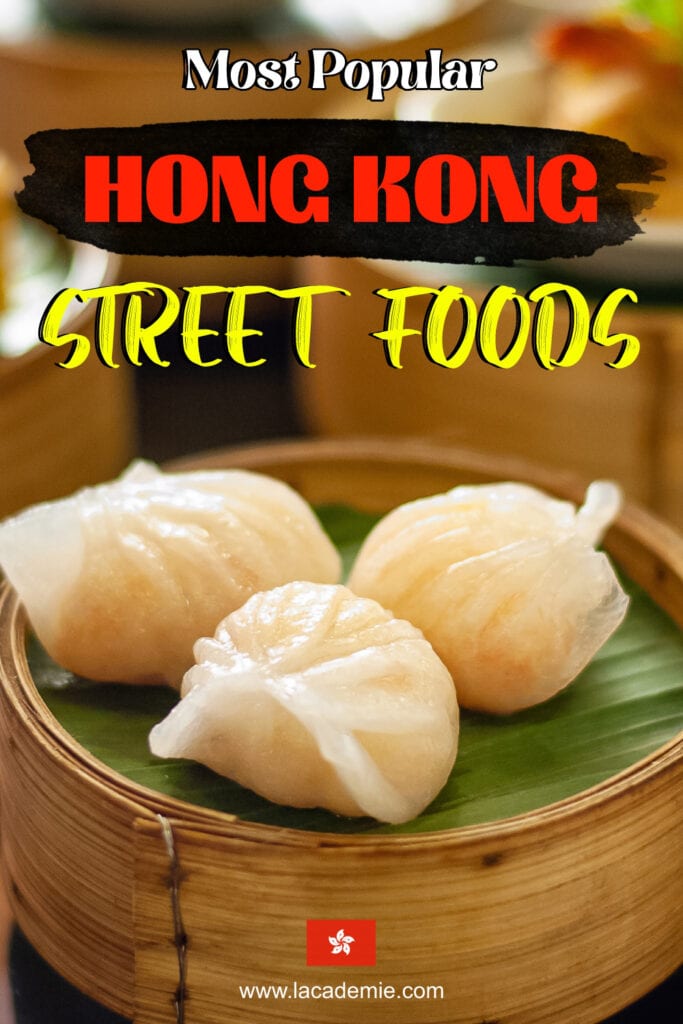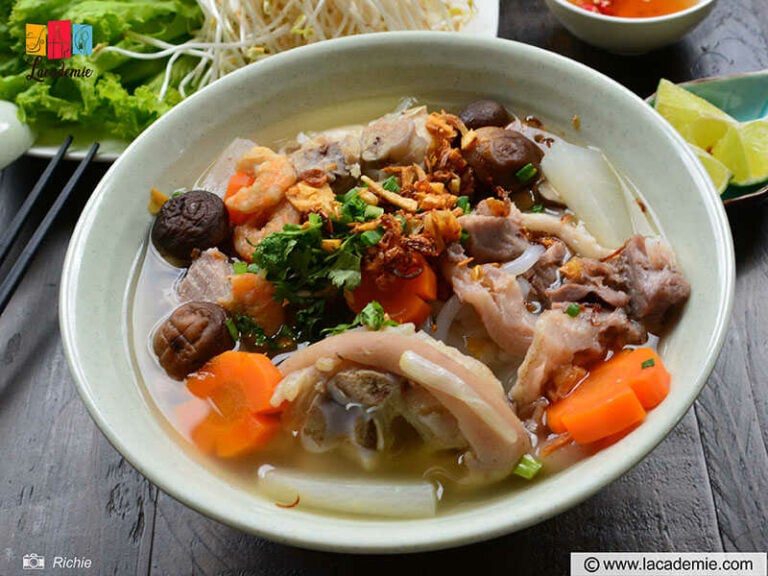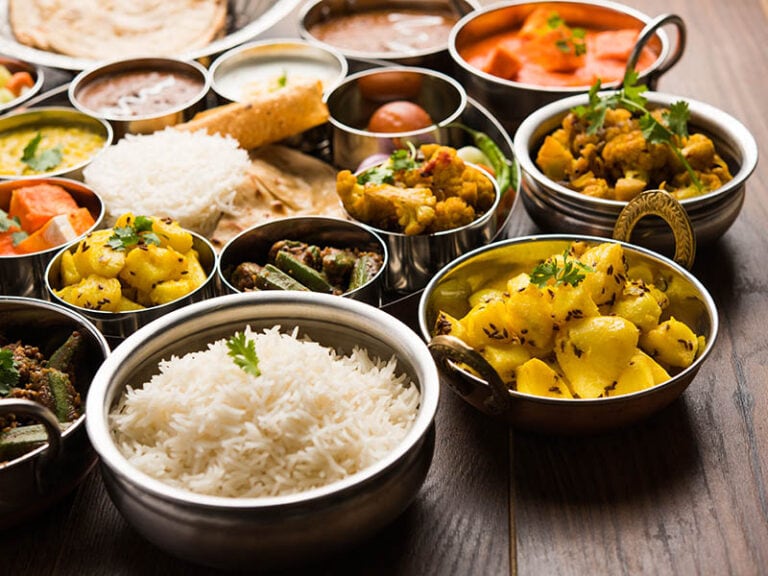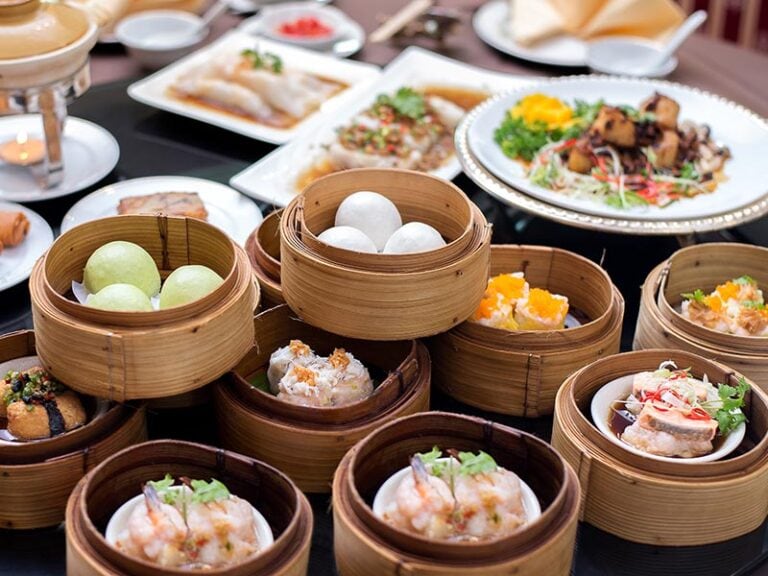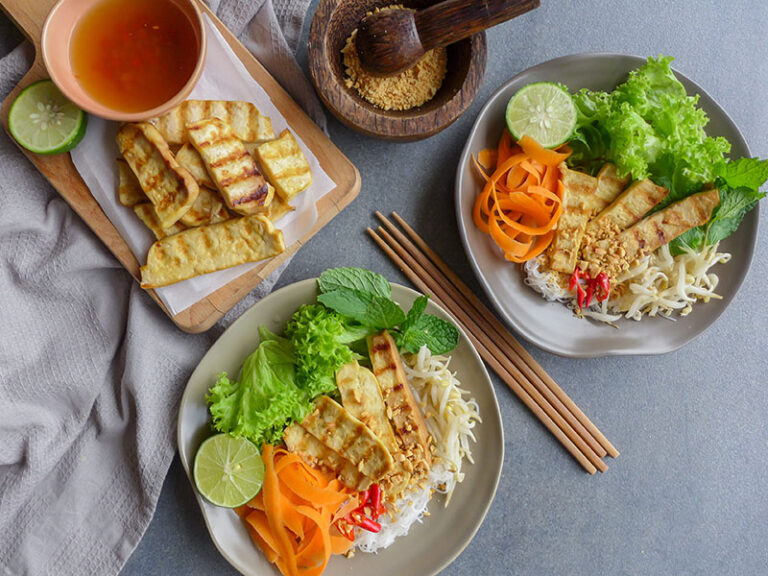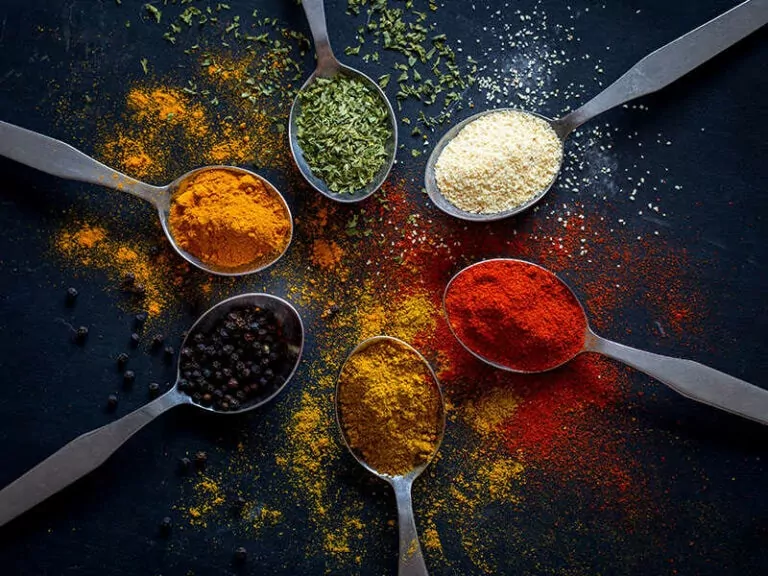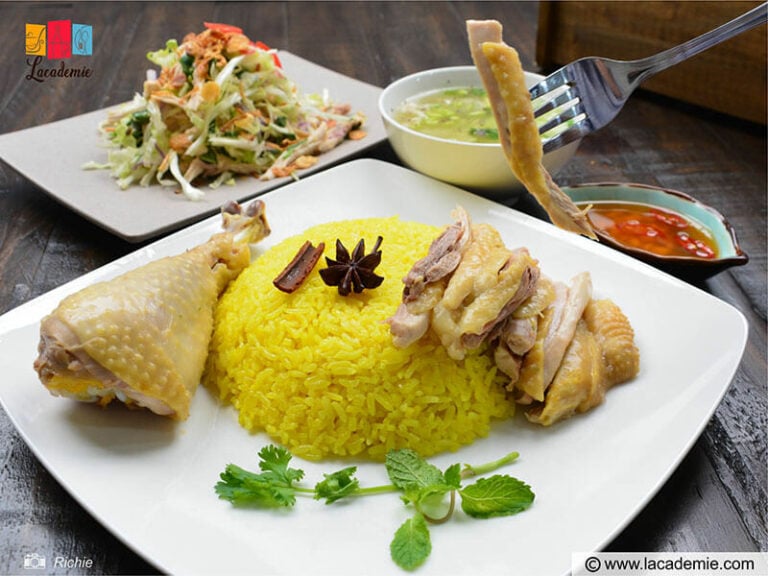Hong Kong street food, like that of other Asian nations, has become an essential cultural feature of this region’s heritage. Your Hong Kong trip/tour would be incomplete unless you had a memorable experience with the town’s street delicacies.
The street food vendors/stalls in Hong Kong are known as “Dai Pai Dong.” Would you like to know what you can find in these Dai Pai Dongs? My recommendations below will meet your expectations.
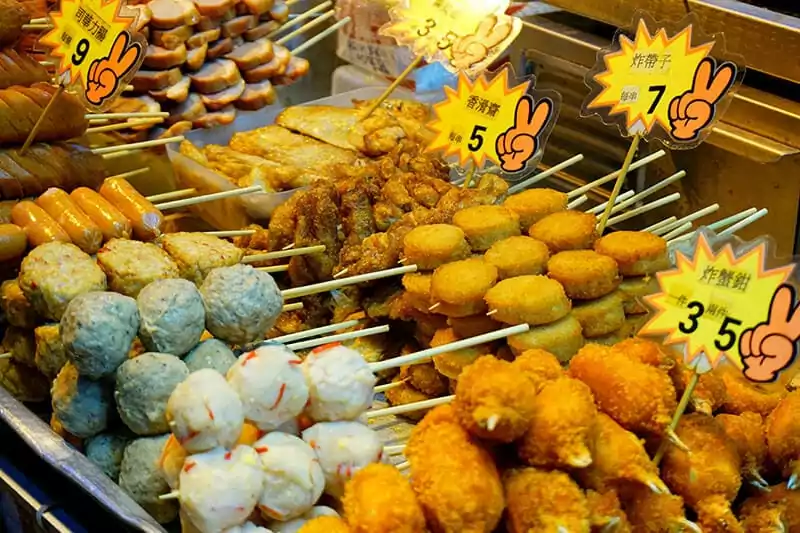
Notable Savory-Filled Dim Sums Or Dumplings In Hong Kong
Let’s start today’s list with some tasty Hong Kong’s Dim Sum, Dumplings (or Bao)! When it comes to these foods in Chinese-related cuisines, you will never need to question their palatableness. Check my recommendations out now!
1. Char Siu Bao (Buns With Barbecued Pork)
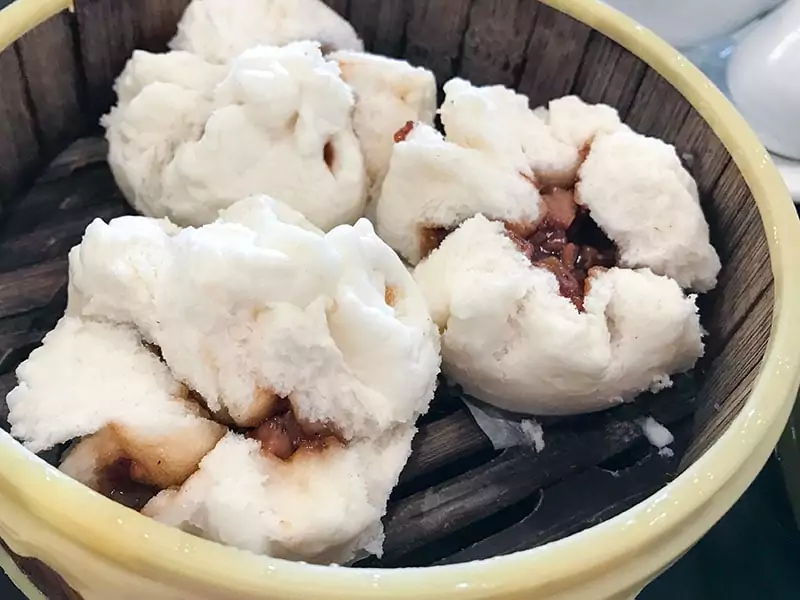
Steamed Bun is a famous Asian treat, and its true origin is related to China. Char Siu Bao (Steamed Buns with Barbecued Pork) is a Hong Kong specialty found in high-end restaurants and roadside eateries/vendors.
Even though there is no definite history of this food, I can tell you that it has been popular in this country for generations.
The filling of Char Siu Bao is marinated grilled pork (Char Siu). After processing, the pork meat will be exceptionally soft, sweet, succulent, and quickly melt in your mouth.
Next, the cooks will wrap this pork filling in a special dough for this food. This unique twist will make your cake have a memorable softer and spongier shell.
Most suggested places to eat:
Sun Kwai Heung
Address 1: Chai Wan, Chai Wan Rd, 345, Goldmine Building Block A, Shop 17, G/F
Address 2: Shop 17, G/F, Goldmine Building Block A, 345 Chai Wan Road, Chai Wan
Time: 8 AM – 6 PM (From Monday to Sunday)
Phone: +85225561183
Average Cost For One Portion: 68 HKD to 88 HKD (9 USD – 11 USD)
2. Xiao Long Bao (Shanghai Soup Dumplings)
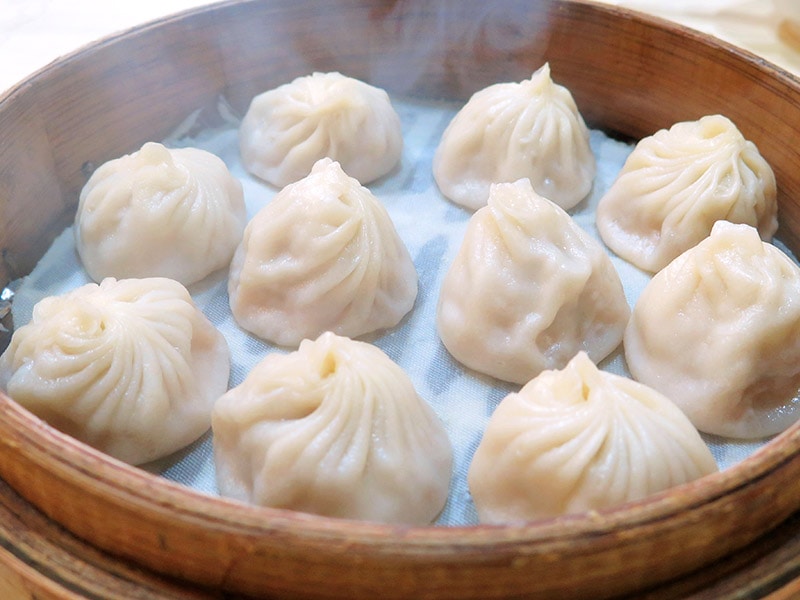
There are several variations of the story surrounding the origin of Xiao Long Bao. However, the most well-known tales are those of Huang Mingxian (owner of the Ri Hua Xuan restaurant in ancient Nanxiang town, now in Shanghai) and the Qianlong King.
This palatable Xiao Long Bao was created in the 18th or 19th century based on these stories. Furthermore, the name “Xiao Long Bao” of this treat was given by Qianlong King, which means “small steamed dumplings in a small steamer”.
Many people love eating this Asian treat since it offers a distinctive effect when biting. The luscious broth from the dumpling will rush into your mouth and warm up your soul. Dip the food into Zhenjiang vinegar with chili crisp will help a lot to enhance your food’s taste.
To make a perfect Xiao Long Bao for a traditional breakfast, the chefs need to have specific skills. Every portion of Xiao Long Bao is a work of art, and you should grab the chance to try them right away.
Most suggested places to eat:
Address: City 18, 18 Tak Hing St, Jordan
Time: 11:30 AM – 10 PM (afternoon break from 3PM to 5:30PM, open everyday)
Website: asian-restaurant-319.business.site
Phone: +85223779488
Average Cost For One Portion: 68 HKD to 98 HKD (9 USD – 12,5 USD)
3. Yun Tun Mian / Wantan Mee (Wonton Noodle Soup)
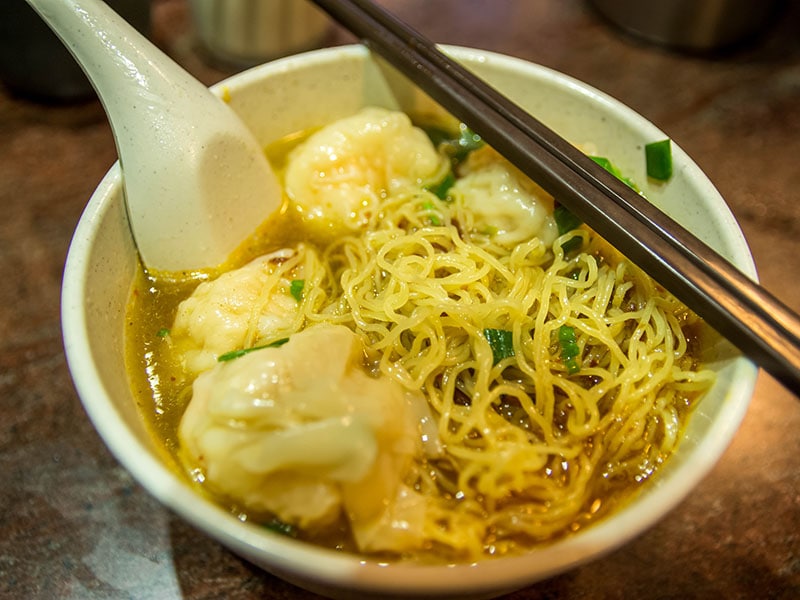
Wonton Noodle Soup may be found worldwide, but the Hong Kong version is the most prized. Yet, this Hong Kong delicacy has its roots in Guangdong and was made during the ancient Chinese Qing Dynasty.
This Chinese-inspired recipe has everything you might want for a classic Hong Kong lunch, so give it a try if you have the chance. Believe me when I say that it is worthwhile to take a chance. In case you want it for breakfast, go for it since it will also be good.
Wonton noodles are a staple in Hong Kong cuisine, with a light broth mixed with fantastic chewy noodles. The most important part of this dish is the Wonton, which regularly consists of 30% meat and 70% pork (together with some other spices).
These scrumptious Wontons will be cooked through before placing in a bowl with steaming bouillon and serving.
Here are the never-fail tips to get the best Wonton Noodle Soup in Hong Kong.
Most suggested places to eat:
Address: G/F, 51號 Parkes St, Jordan
Time: 12 PM to 6 PM (From Monday to Sunday)
Website: www.mmk.hk
Phone: +85227365561
Facebook fanpage: www.facebook.com/
Average Cost For One Portion: 28 HKD to 65 HKD (3,5 USD – 8,5 USD)
4. Siu Mai / Shu Mai (Steamed Dumplings)
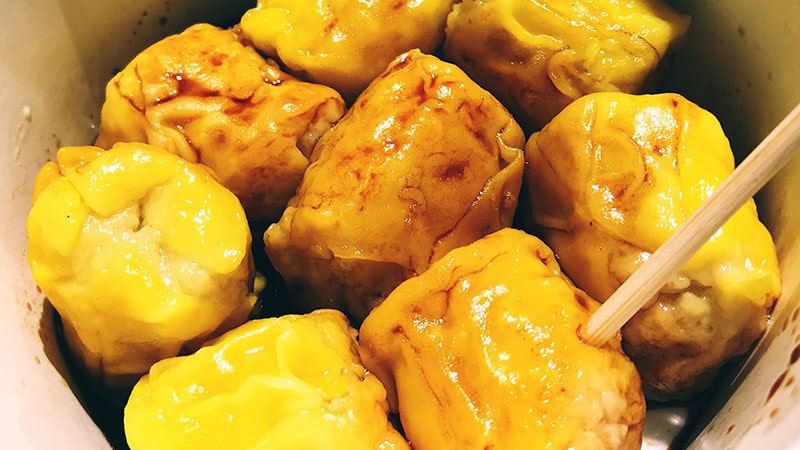
Siu Mai/Shu Mai, also known as Steamed Dumplings, is simply processed and has a distinctive flavor. Although it is known as “dumplings” in English, you shouldn’t confuse it with the steamed buns with thick and fluffy dough covered.
Each stall selling Siu Mai/Shu Mai will have different variations; however, they still follow a general rule. A standard Siu Mai will include meat (or fish filets), black mushrooms, green onions, and wrapped in a thin layer of dough.
In Hong Kong, they serve the food with soy sauce and chili oil, so don’t forget to use them together.
Siu Mai/Shu Mai has been around since ancient times (they say it was created during the Qing or Tang Dynasties). It is quite easy to eat and suitable for a wide range of people; the pricing is very affordable. Therefore, you should definitely try them out once!
You should see the importance of Siu Mai in Hongkongers’ hearts here.
Most suggested places to eat:
Address: 27 Hillier St, Sheung Wan
Time: 10 AM to 6 PM (From Monday to Saturday), 8 AM to 6 PM (Sunday only)
Phone: +85228518088
Facebook fanpage: www.facebook.com/
Average Cost For One Portion: 23 HKD to 58 HKD (3 USD – 7,5 USD)
5. Lo Mai Gai / Nuo Mi Ji (Sticky Rice Dumplings/Sticky Rice Chicken)
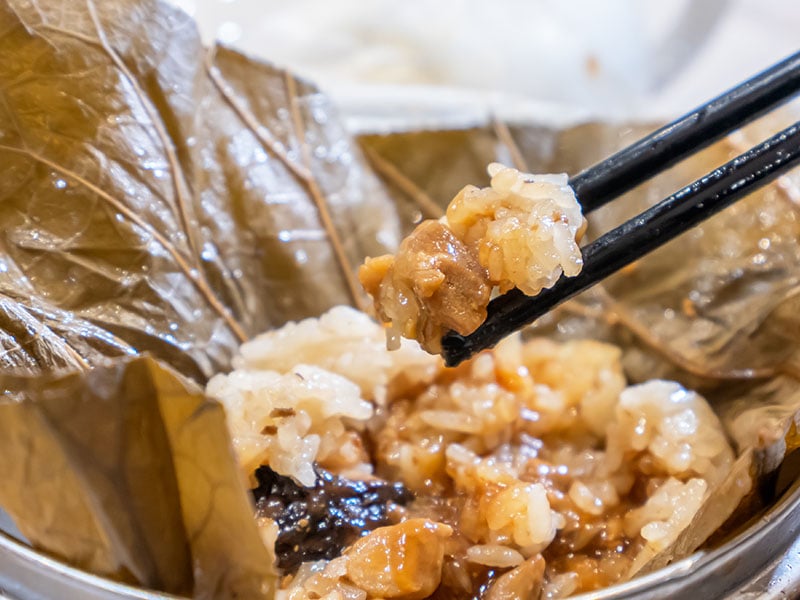
Lo Mai Gai is a type of Dim Sum, though it does not look like the typical Dim Sum you might think of right now. This treat originated in Cantonese communities and has now spread worldwide, for instance, in Hong Kong, Singapore, and Malaysia.
All the rice, meats, salted egg yolk, and shitake mushroom are wrapped inside big lotus leaves. The chefs have to be careful during this step as no one wants their sticky rice to become soggy and mushy.
Each portion of Lo Mai Gai might be too much for one; I suggest you share it with your family or friends once you decide to have a taste of this delicacy. Unwrap the lotus leaves, and the aromatic steam will linger around your nose. How attractive it will be!
What is the special thing about Lo Mai Gai?
Most suggested places to eat:
Tim Ho Wan (Food chain)
Address 1: 9-11 Fuk Wing St, Sham Shui Po
Time 1: 10 AM to 6 PM (From Monday to Friday); 9 AM to 6 PM (Saturday and Sunday)
Phone 1: +85227881226
Address 2: Shop 12A, Hong Kong Station Podium Level 1, IFC Mall Central
Time 2: 9 AM to 6 PM (From Monday to Sunday)
Phone 2: +85223323078
Address 3: Seaview Building, Shop B, C, & D, G/F, 2, 8 Wharf Rd, North Point
Time 3: 10 AM to 6 PM (From Monday to Sunday)
Phone 3: +85229795608
Address 4: 18 Hoi Ting Rd, Tai Kok Tsui
Time 4: 10 AM to 6 PM (From Monday to Sunday)
Phone 4: +85223322896
Website: www.timhowan.com
Average Cost For One Portion: 11 HKD – 36 HKD (1,5 USD – 5 USD)
6. Jyu Cheung Fun / Chee Cheong Fun (Steamed Rice Noodle Rolls)
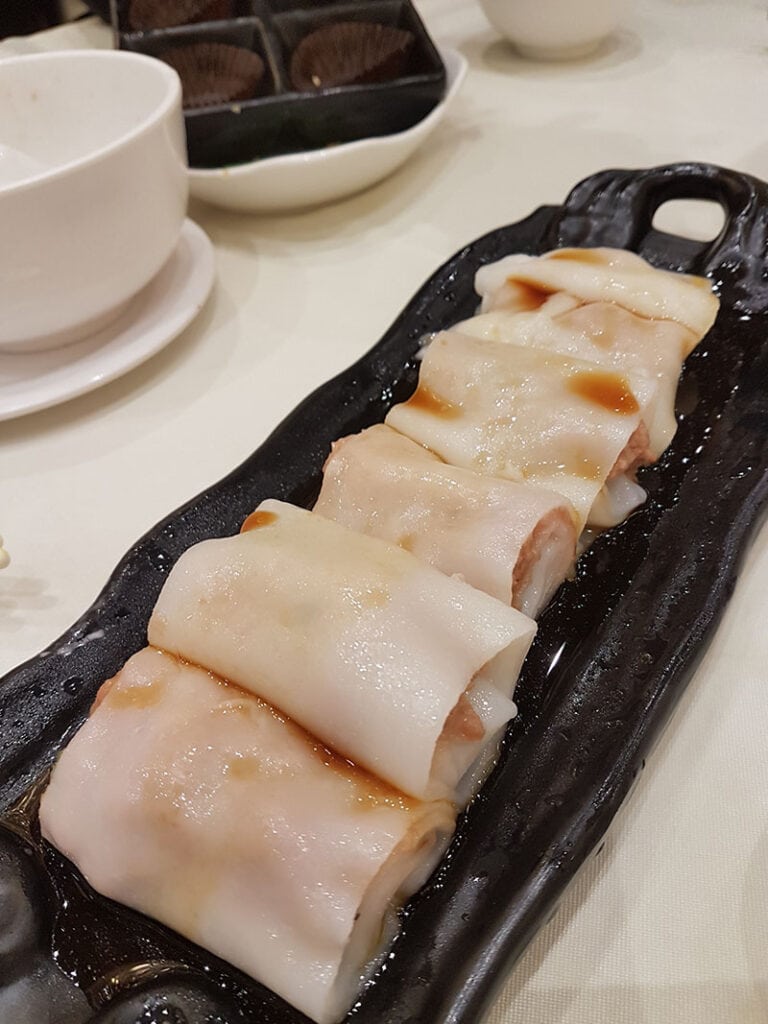
Originated from the Southern China regions (Guangdong province) and Hong Kong in the 1930s, this Jyu Cheung Fun was developed for years before being listed on the world food list. This unique Hong Kong food is renowned for its simplicity and deliciousness.
In Cantonese, “jyu” means “pig”, “cheung” means “intestines” and “fun/fan” means “noodles”. The food is typically called “Jyu Cheung Fun” just because it has the pork intestine-like appearance, not its fillings.
The idea to make this dish is quite simple; they will use Shahe Fen (a Chinese-style noodle variety) as the shell for Jyu Cheung Fun. After that, the cooks will put several kinds of toppings: minced beef, shrimp, veggies, and other condiments inside the noodles.
There is a variant of this Jyu Cheung Fun, which uses sweet fillings; you can opt for it to try once if you want to. When serving, Hong Kong people will serve the treat with various sauces, from soy sauce and hoisin sauce to fragrant sesame sauce. All are luscious!
Most suggested places to eat:
Address: Sham Shui Po, Kweilin St, 121
Time: 6:30 AM to 6 PM (From Monday to Sunday)
Phone: +85227200239
Average Cost For One Portion:4 HKD to 25 HKD (0,5 USD – 3 USD)
Non-Vegan Street Foods You Should Try Once In Hong Kong
Now, move to some other savory dishes you can find on Hong Kong streets! You can randomly try any suggestions below, and it will be great after all.
7. Cha Ye Dan (Tea Eggs)
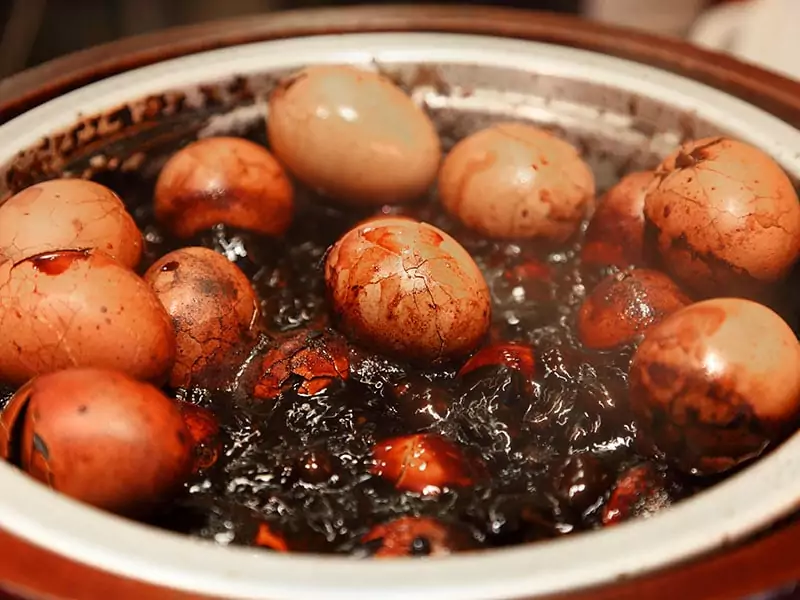
Tea Egg is a specialty dish from Hong Kong and China in general. This Tea Egg dish (from Zhejiang province, China) contains many quintessences of the cuisine here, both the way people make and eat it.
Due to the concept of Hong Kong people, enjoying Tea Eggs during the Lunar New Year will bring luck and prosperity to their families. So on that holiday, every family prepares Tea Eggs.
However, they are still sold in many places on regular days because these eggs are delicious and can be eaten as a side dish or dessert.
Most suggested place to eat:
Address: Hong Kong, Mong Kok, Fa Yuen St, 18 Shop 4, G/F, 24 Rejoice Court
Time: 12 PM to 6 PM (From Monday to Sunday)
Website: www.tenren.com.tw
Phone: +85226026098
Average prices: 3 HKD to 5 HKD (about 0,5 USD)
8. Gali Niu Nan (Hong Kong Curry Beef Brisket)
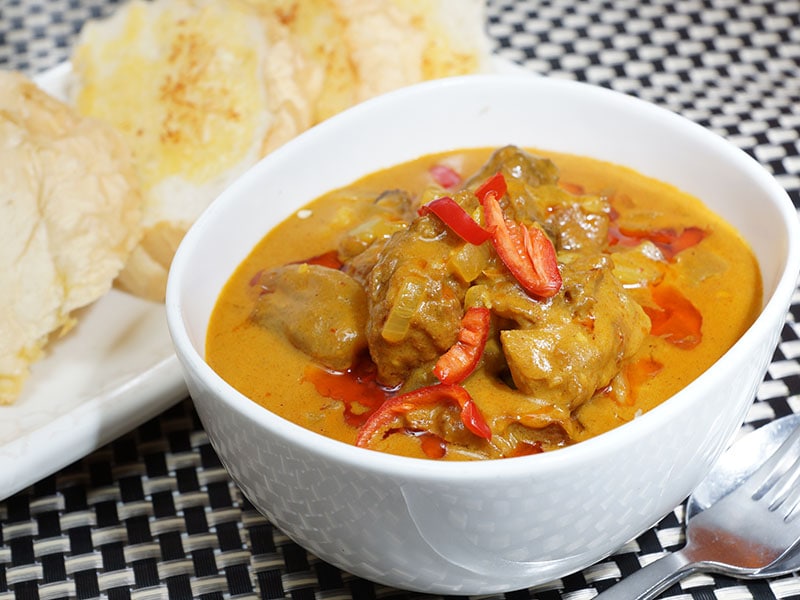
Hong Kong Curry Beef Brisket is not an authentic Hong Kong delicacy; it was influenced by the Indian traditional Curry. The story about Gali Niu Nan’s origin started when the British arrived in Hong Kong in 1841, they brought Indian workers with them.
These employees carried their hometown’s curry spices with them, and this is said to be the origin of Gali Niu Nan. After a long time, this specialty has become a must-have dish in Hong Kong; everyone visiting this area must have Gali Niu Nan.
Most suggested places to eat:
Address: Ground Floor, 21 Gough Street, Central
Time: 12:30 PM to 6 PM (From Monday to Friday, close on Sunday)
Phone: +85228505967
Average Cost For One Portion: 50 HKD – 100 HKD (6,5 USD – 13 USD)
9. Jeen Yeung Sam Bao (Three Stuffed Treasures)
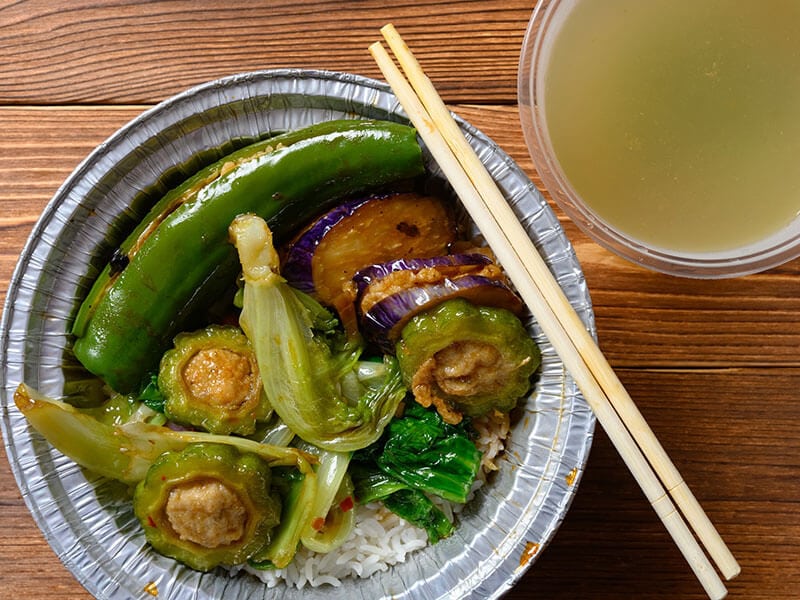
Jeen Yeung Sam Bao, Three Stuffed Treasures, or Stuffed Vegetables, you can use these names to call this treat. The idea to create this food is pretty simple; the cooks will stuff green pepper, tofu, and eggplant with a special dace fish paste.
They can utilize other vegetables, but the three options mentioned are the most prevalent. Once visiting Hong Kong, you can see people sell this deep-fried dish a lot on the street. And not only Hongkongers, even Chineses love having this dish as a side order or a snack.
Because the ingredients and processing method are quite basic, the food’s taste will give no fussy feeling. Even if you are a picky eater, Jeen Yeung Sam Bao can satisfy you. Remember, Hong Kong sellers will regularly offer you a set of three for this food.
Let’s see how a Hongkonger makes his beloved Three Stuffed Treasures!
Most suggested places to eat:
Address: Shop A4, 43-59 Tai Tsun Street, Tai Kok Tsui, Hong Kong
Time: 12 PM to 9 PM (From Monday to Sunday)
10. Ngau Lam Mein / Niu Nan Mian (Beef Brisket Noodles)
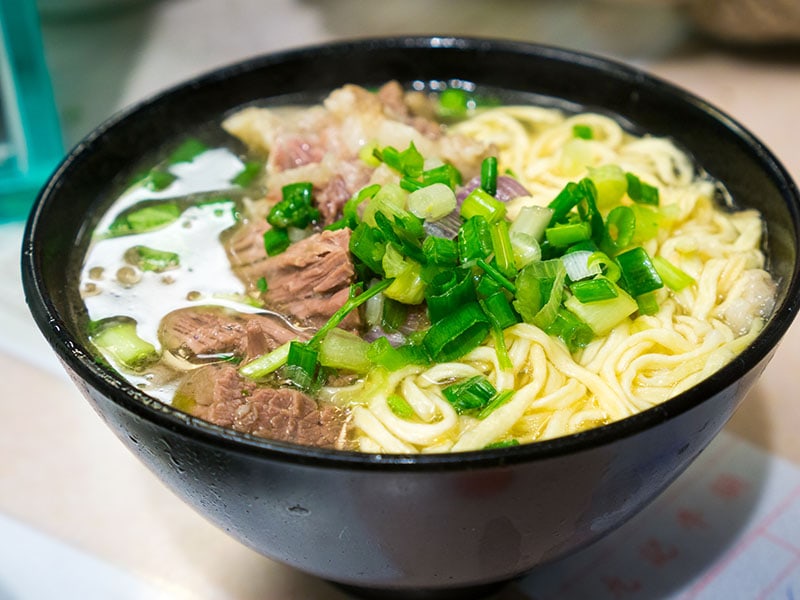
As you can see, Ngau Lam Mein/Niu Nan Mian is related to the previous heart-warming Gali Niu Nan. Because Gali Niu Nan is so hearty and savory, practically every curry seller here will pair it with some starch base.
To balance the flavor, they frequently serve your meaty curry dish with rice or noodles, which makes the food even more filling. Therefore, if you are hungry after wandering around the Hong Kong night markets, Ngau Lau Mein will fill up your stomach right away.
Knowing more about how people think about Hong Kong Beef Brisket Noodles now!
Most suggested places to eat:
Address: 13 Electric Rd, Causeway Bay
Time: 11 AM to 6 PM (From Monday to Sunday)
Website: storedirectory.dimorder.com/
Phone: +85228070181
Average Cost For One Portion: 55 HKD to 60 HKD (7 USD – 7,5 USD)
11. She Geng (Snake Soup)
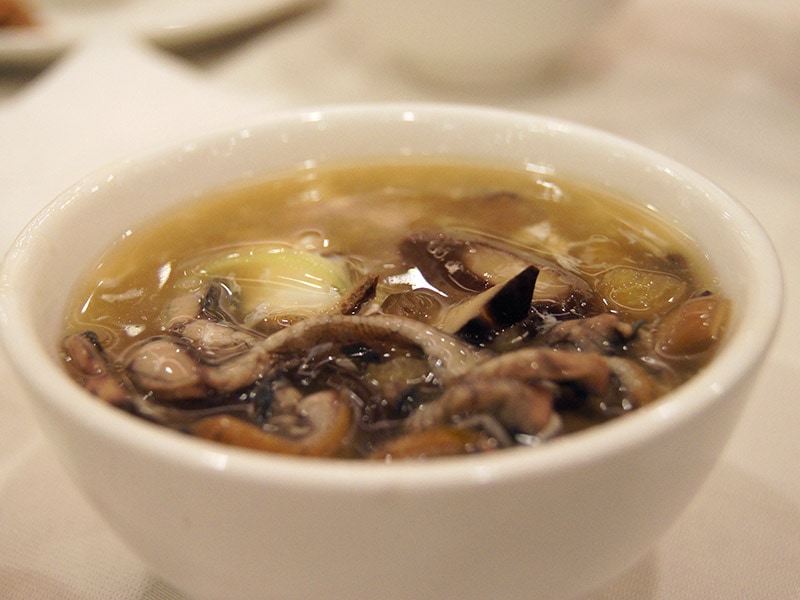
There is nothing better than a bowl of hot soup on a cold winter night. And if you are in the mood for something adventurous, it’s time to try this exotic Snake Soup. Although snake meat frequently appears in many other cuisines, Hong Kong’s She Geng won’t be the same.
Snake soup originated centuries ago (during the Warring States period) and has been praised in Chinese culture for its supposed medical benefits and high nutritional value.
The soup base will be lightly sweet and soothing with a rich taste and chewy texture from the snake meat.
The hot spices (pepper), herbs (thinly shredded lemon leaves), and vinegar used help neutralize the main protein’s unpleasant odor. Thanks to that, this dish will fulfill your taste experience.
Learn more about a mind-blowing story of Snake Soup dish in Hong Kong now!
Most suggested places to eat:
Address: Prince Edward St.
Time: 12:45 PM to 6 PM (From Monday to Sunday)
Average Cost For One Portion: 62 HKD (about 8 USD)
12. Wan Zi Chi (Faux Shark Fin Soup/Imitation Shark Fin Soup)
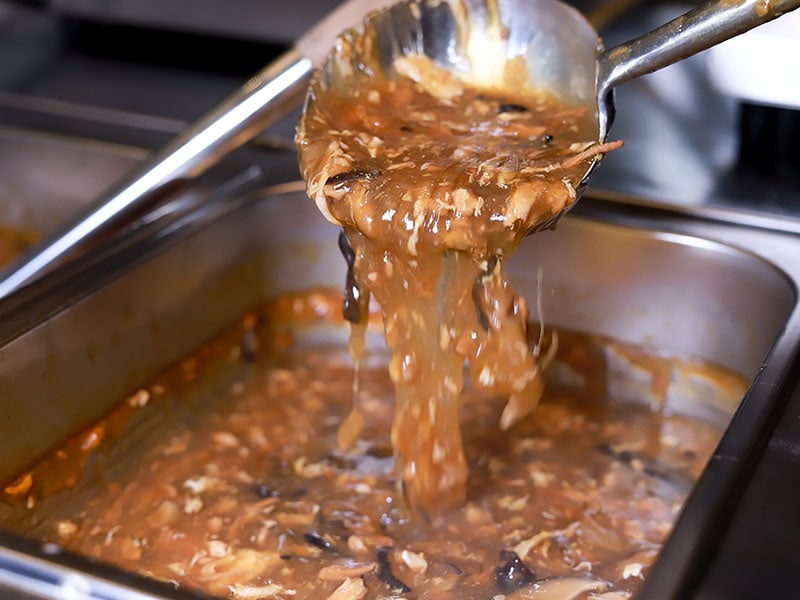
This Wan Zi Chi is the following soupy recommendation for your ideal dinner in Hong Kong. Although the real Shark Fin Soup is famous, it has encountered several controversies around its humanity and environmental-friendly issues.
Therefore, Hongkongers created this Faux Shark Fin Soup, which calls for mushrooms, egg, pork/chicken, and other ingredients (not shark fin). The food was first made on Temple Street, Hong Kong, during the 1950s to 1960s.
After time developing and enhancing, the food has become an unchangeable street food in various Hongkongers’ hearts.
Most suggested places to eat:
Tao Heung (Food chain, most recommended store)
Address: Mong Kok, Nathan Rd, 610 Shop AB, 2/F, Hollywood Commercial Center, 610 Nathan Road, Mong Kok, Hong Kong
Time: 7 AM to 4:30 PM (From Monday to Sunday)
Website: www.taoheung.com.hk
Phone: +85235291282
Average Cost For One Portion: 21 HKD – 34 HKD (2,5 USD – 4,5 USD)
13. Zha Da Chang (Deep-Fried Pig Intestine)
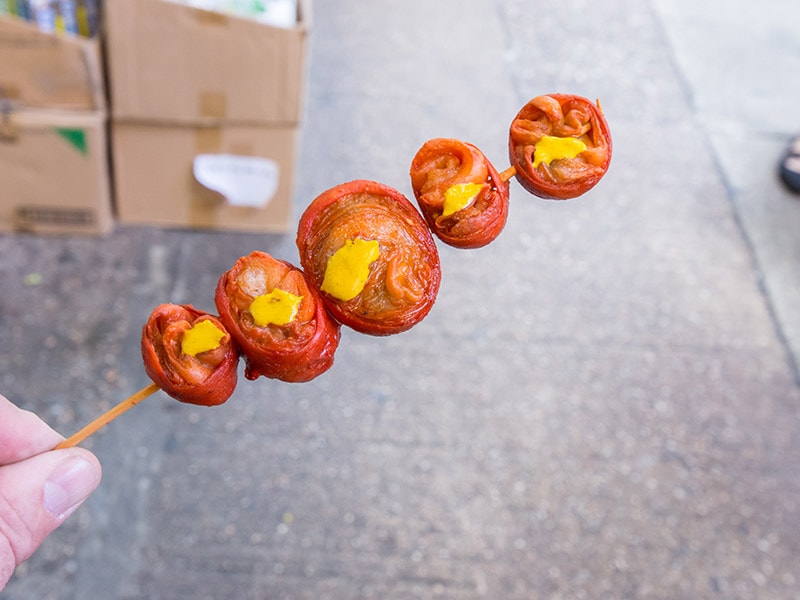
For visitors who have a taste for food made from animal organs, Zha Da Chang is a must-try dish. This specialty has a rather sophisticated processing method and requires a long time to prepare, yet, every effort is worth it.
Hong Kong chefs must meticulously clean the offals/intestines to decrease their odor before marinating and deep-frying the pig intestines skewers in sizzling oil. After that, Zha Da Chang will go with delectable sweet-spicy sauce. Yummy!
Even though some other Asian countries’ foods use pork/pig intestine, Hong Kong’s Zha Da Chang is distinguished. Let’s take time and enjoy a mouthful of crispy, chewy, and irresistible Deep-Fried Pork Intestine!
In case you want to know more about Fried Pig Intestines, this can help you out!
Most suggested places to eat:
Address: 3-7 Cannon St, Causeway Bay
Time: 7:30 AM to 6 PM (From Monday to Sunday)
Average Cost For One Portion: 10 HKD to 30 HKD (1,5 USD – 4 USD)
14. Kao Ya Fan (Roast Duck/Goose On Rice)
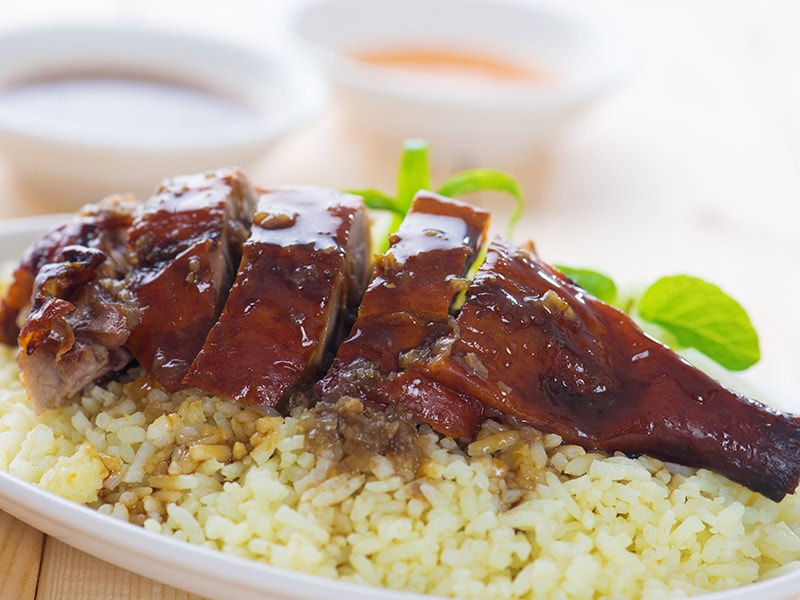
Hong Kong cuisine is also bold with signature Asian gastronomy, so it is impossible to ignore a rice dish on this list, right? Most Asian rice dishes are hearty, and this Roasted Duck/Goose On Rice is a prominent nominee among them.
The Hong Kong Roast Duck/Goose is relatively different from the famous Beijing one. Instead, the Hong Kong Kao Ya is typically processed in a traditional Guangdong recipe.
The roasted meat is well-marinated with secret spices and can always pair with special soy sauce/dipping. Don’t forget rice (as the name of this contains “Fan”/ rice)!
Most suggested places to eat:
Address: 23 Bowrington Rd, Bowrington
Time: 9:30 AM to 6 PM (From Monday to Sunday)
Phone: +85225741131
Average Cost For One Portion: 8 HKD – 54 HKD (1 USD – 7 USD)
Address: 226 Hennessy Rd, Wan Chai, Hong Kong
Time: 11 AM to 9:30 PM (From Monday to Sunday)
Website: www.krg.com.hk
Facebook fanpage: www.facebook.com/
Phone: +85225201110
Average Cost For One Portion: 74 HKD (about 9,5 USD)
15. Ting Zi Zhou (Boat Congee)
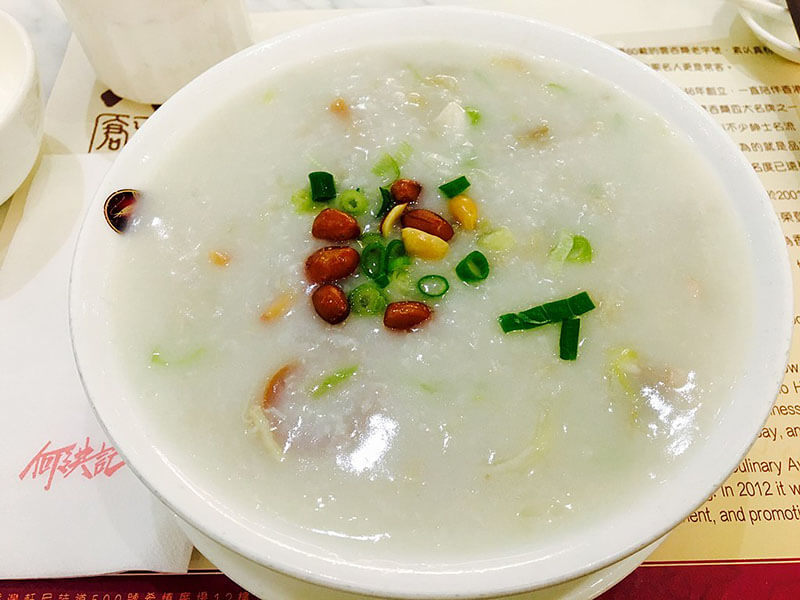
After the rice dish, we often learn more about porridge/congee. Boat Congee may look relatively simple, but it is also highly addictive after the first try.
If you ask Hongkongers for a breakfast recommendation, they might suggest this toothsome Ting Zi Zhou or Boat Congee. This food has a humble origin (they believe the fishermen first created it), but it has successfully gained people’s hearts over the years.
The ingredients, toppings, and side dishes vary in different shops, yet, the basics include meats, seafood, peanuts, and deep-fried Chinese dough sticks. The right way to have it is to mix all of them and have a mouthful.
Most suggested places to eat:
Address: G/F, 39 Luen On Street, Luen Wo Market, Fanling
Time: 7 AM to 6 PM (From Monday to Friday)
Phone: +85224661788
Average Cost For One Portion: 19 HKD to 35 HKD (2,5 USD – 4,5 USD)
16. Gali Yu Bian (Curry Fish Balls)
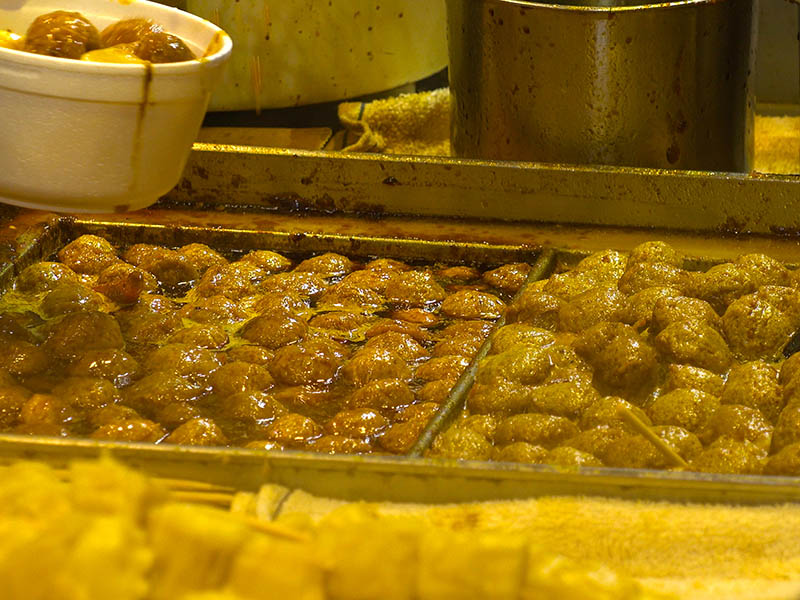
Curry fish ball is considered the iconic snack of Hong Kong, and you will easily find this dish anywhere on the street here. Walking on the roads around the night markets, you can quickly scent the attractive smell of these Gali Yu Bian vendors.
Although fish balls were created in China during the Qing Dynasty (in Chiu Chow and Fujian provinces), Gali Yu Bian first appeared on Hong Kong streets in the 1950s. The idea of infusing the Indian hint (curry) into this Hong Kong food helps it become unique.
Although the main ingredient of fish balls is mainly flour (and no fish meat), this still does not reduce people’s preference for this dish. The puffy, chewy fish balls soaked in delectable esoteric curry sauce are a draw for foodies from near and far.
Curious about Hong Kong Curry Fish Balls’ taste? Check out this review!
Most suggested places to eat:
Address: Kwai Chung
Time: 8 AM to 6 PM (From Monday to Sunday)
Phone: +85226101912
Average Cost For One Portion: 37 HKD – 50 HKD (5 USD – 6,5 USD)
Vegetarian/Vegan Food You Can Find On Hong Kong Streets
Don’t worry if you are a vegan/vegetarian and still want to enjoy Hong Kong street delicacies. There are various options for you, and here are some most suggested ones for you to refer to.
17. Kao Lizi (Roasted Chestnuts)
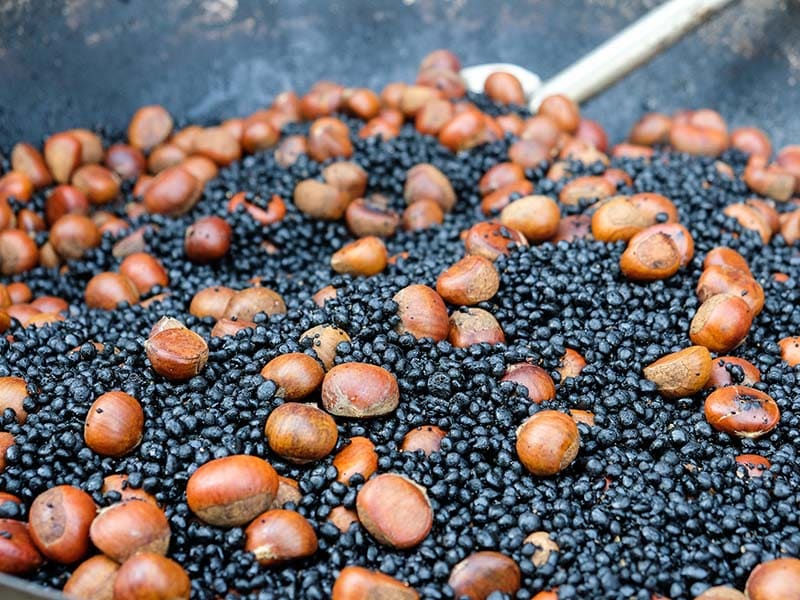
To Hongkongers, once you can scent the smell of Roasted Chestnuts in the air, you will know it is a sign of winter. It is because people in this region will prepare this delicacy from the beginning of October.
This simple food can also be a quick and healthy Hong Kong sweet treat or snack you can opt for here. Nothing fussy is added to this treat’s cooking process; the fascinating things lie in the chestnuts’ quality.
Besides the simple sand-roasted Kao Lizi, there is another variation where they will put some syrup into the chestnuts while roasting. That variant is called Tang Kao Lizi, and it will deliver a sweeter taste that is more attractive to people who love mellowy stuff.
Let’s take a closer look at Kao Lizi street vendors!
Most suggested places to eat:
Temple Street Night Market (Traditional Market)
Address: Temple St, Jordan
Time: 2 PM to 11 PM (From Monday to Sunday)
Website: www.temple-street-night-market.hk
Average Cost For One Portion: 25 HKD
18. Kao Hongshu / Kao Baishu (Baked/Roasted Sweet Potato)
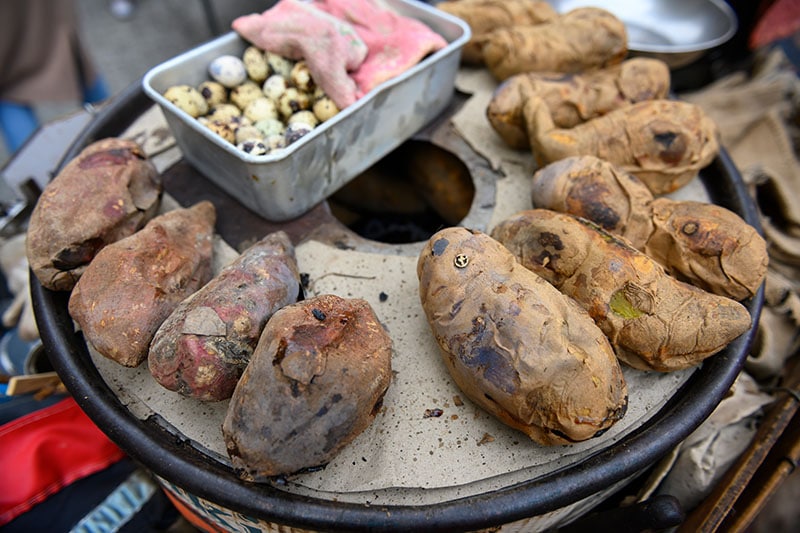
One fascinating fact about Kao Hongshu (Roasted Sweet Potato) is Hongkongers sell it together with Kao Lizi (Roasted Chestnuts). Both are a special treat for wintertime and play an important role in many people’s hearts.
You can find these rustic treats on Japanese streets or in other East Asian countries such as Korea and Vietnam, but the Hong Kong variations have a distinct flavor.
My advice is to get more than one tuber at a time since you might desire another one later. The mild, slight sweetness from the baked sweet potatoes will linger in your mind for a long time.
Most suggested places to eat:
The street vendors that sell Kao Lizi
19. Zhang Zhi Gan Lu (Mango Pomelo Sago)
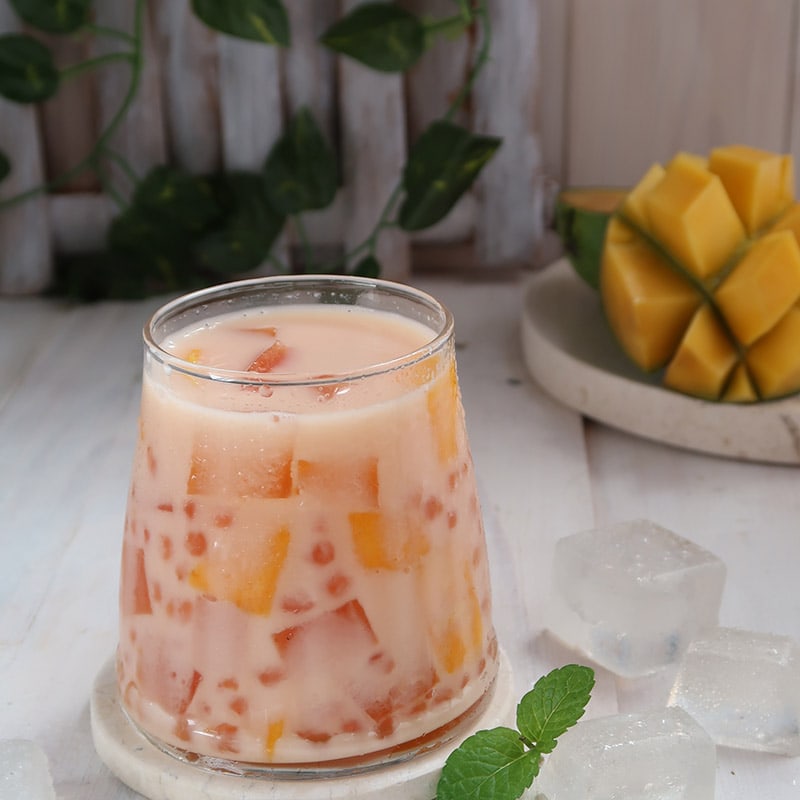
Unlike some other rumors about the origin of this treat, Zhang Zhi Gan Lu (or Mango Pomelo Sago) was first created by Hong Kong’s Lei Garden in 1984.
The brand’s chef, Mr. Wong Wing-Chee tried to make dessert with Singaporean-inspired fruits to serve in their Singaporean branch. He succeeded, and Mango Pomelo Sago is now famous in its hometown, Singapore, and other Asian countries.
Since this sweet treat calls for fresh mango, sago, and milk, Zhang Zhi Gan Lu becomes a favorite dessert for any person with a sweet tooth on hot summer days.
Do you want to know how Hongkongers make their authentic Mango Pomelo Sago?
Most suggested places to eat:
Address: 78 San Hing St, Cheung Chau
Time: 12:30 PM to 9 PM (From Monday to Sunday)
Phone: +85256824638
Facebook fanpage: wwww.facebook.com/
Instagram: www.instagram.com/
Average Cost For One Portion: 42 HKD (about 5,5 USD)
20. Tofu Fa / Doufu Hua (Tofu Pudding)
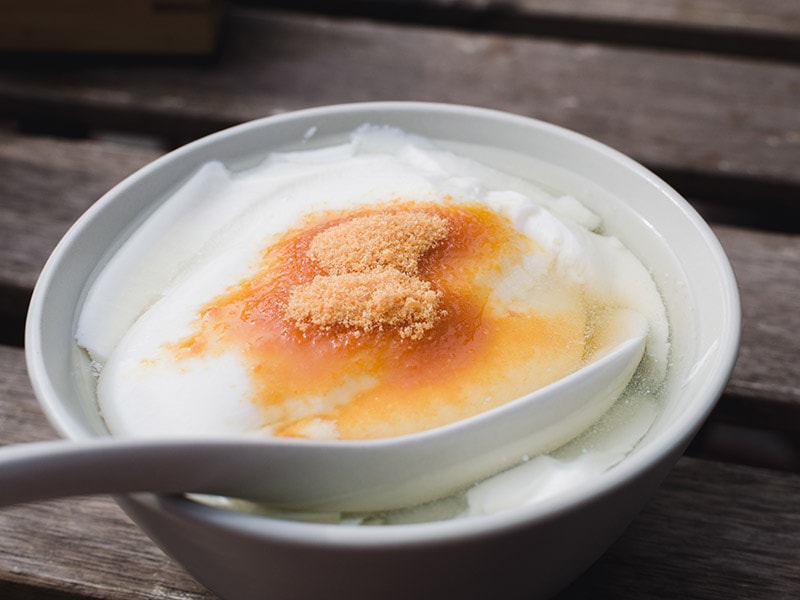
Tofu is a staple in various Chinese-related cuisines, and Hong Kong gastronomy is not an exception. The first tofu treat I want to recommend to you here is Tofu Fa, a refreshing Chinese sweet dish that can easily appeal to your taste buds.
There isn’t much to say about the texture and flavor of the young tofu used in this dish (which is smooth and silky that can be melted easily on your tongue). It’s the use of ginger syrup, sesame paste, and other toppings that make this humble Tofu Fa such a delicacy.
You won’t want to miss this best intro of Tofu Fa.
Most suggested places to eat:
Address: Sham Shui Po, Pei Ho St, G/F, No. 118
Time: 7 AM to 6 PM (From Monday to Sunday)
Facebook Fanpage: www.facebook.com/
Average Cost For One Portion: 10 HKD to 12 HKD ( about 1,5 USD)
Address: Hong Kong, Tsuen Wan, Tsuen Hing Path, Shop 5B, G/F, No. 6 Cheong Tai Building
Time: 9 AM – 6 PM (From Monday to Sunday)
Phone: +85296606839
Facebook fanpage: www.facebook.com/
Average Cost For One Portion: 3 HKD to 12 HKD ( about 0,5 USD to 1,5 USD)
21. Chou Doufu (Stinky Tofu)
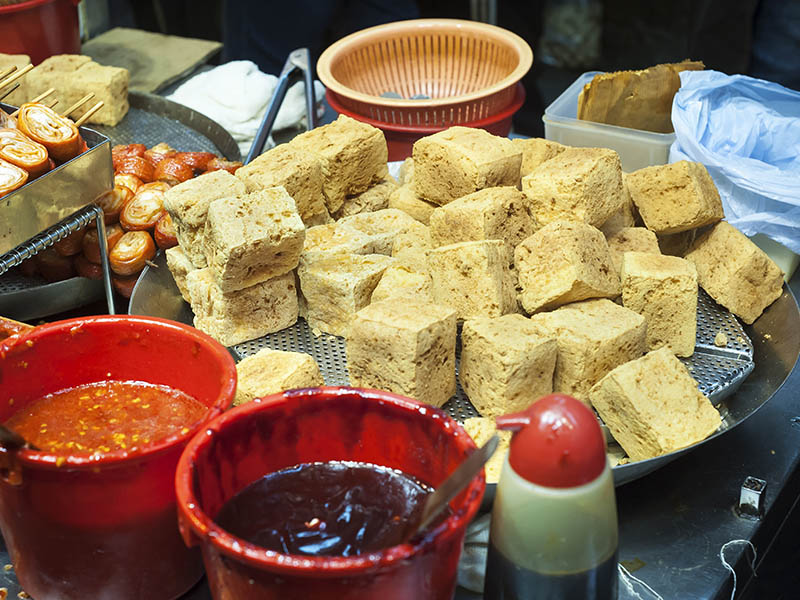
Once mentioning Hong Kong tofu, it will be a miss if I neglect this Chou Doufu/Stinky Tofu. This classic Chinese tofu dish has a robust odor that might be unpleasant to many people, but after you are familiar with it, you will become totally addicted to the creaminess of the fermented tofu.
About the origin of this Chou Doufu, it was invented during the ancient Qing Dynasty by a scholar named Wang Zhihe. He coincidentally forgot his brined tofu for several days, and it turned out great that he decided to sell it.
Nowadays, there are various variations of Stinky Tofu developed around China, and each of them can be processed in different ways, yet each of them tastes phenomenal.
In Hong Kong night markets or street vendors, you can easily find people selling their exotic fried Stinky Tofu in a paper bag with some sauce on the side.
Hongkongers love enjoying this treat with their special Hoisin sauce. But you can still choose to match it with some other regular condiments like soy sauce or chili sauce.
Outside Hong Kong, namely in the street culinary culture of Taiwan, you may also come across barbecued versions of this dish.
Believe me; you won’t want to miss your golden chance and experience the authentic flavors of this Hong Kong treat.
The best taste test for Hong Kong Chou Doufu you might look for is right here.
Most suggested places to eat:
Address: 41 Dundas Street, Mong Kok, Hong Kong
Time: 11 AM to 6 PM (From Monday to Sunday)
Phone: +85221935153
Average Cost For One Portion: 8 HKD to 30 HKD (1 USD to 4 USD)
Address: Hong Kong, Prince Edward, Shop 10, G/F 30-32 Nullah Road
Time: 10:30 AM to 6 PM (From Monday to Friday), 10 AM to 6 PM (Only on Saturday and Sunday)
Average Cost For One Portion: 8 HKD to 12 HKD (1 USD to 1,5 USD)
22. Kao Buolo Doufu Chuan (Grilled Pineapple Tofu Skewers)
Can’t have a meat skewer? You should opt for these vegetarian-friendly Grilled Pineapple Tofu Skewers, and I guarantee you that the taste of this treat will be alluring.
The way to make this dish somehow is like the meaty variations with all the marinating sauces or spices used. Yet, the main ingredients or sauce components are vegan. The standard Kao Buolo Doufu Chuan should have a dark amber exterior and a tempting hue.
Most suggested places to eat:
Address: Temple St, Jordan, Hong Kong
Time: 2 PM to 11 PM (From Monday to Sunday)
Website: www.temple-street-night-market.hk
23. Lung So Tong (Dragon’s Beard Candy/Cotton Candy)
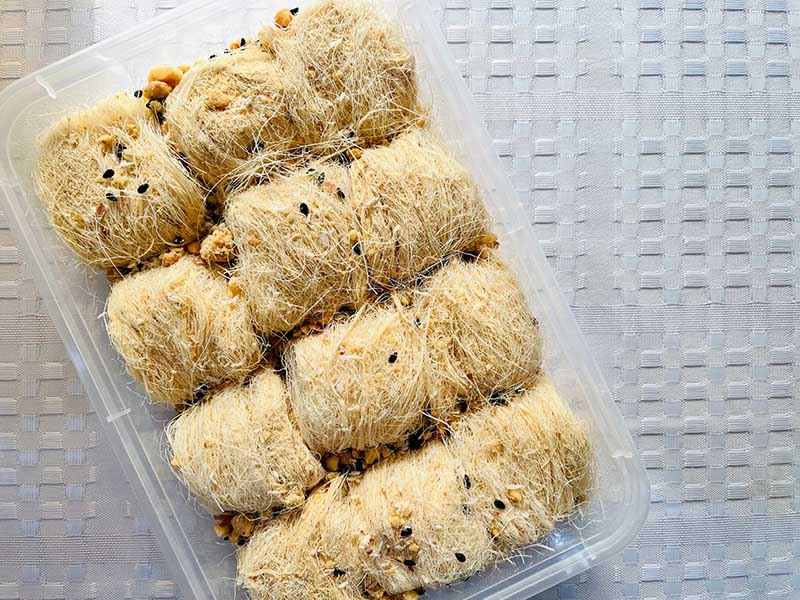
Don’t be surprised if this dish does not contain a real dragon beard. It’s just Cotton Candy that has been painstakingly treated to produce exquisite and tasty strands of maltose sugar.
It is quite easy to melt under high temperatures so that you should eat it immediately after it is made (or at least under 6 minutes).
Local people developed this specialty candy during the previous Han Dynasty (by a royal chef). It was prohibited during the Chinese Cultural Revolution, making it an uncommon delicacy at that time.
Today, food has gradually returned to the daily lives of Chinese/Hong Kong people. People in rural communities also twist Lung So Tong by shaping it into attractive forms and stuffing it with other fillings.
It’s also a fantastic experience to watch the artisans prepare Dragon’s Beard Candy.
Most suggested places to eat:
Address: Temple St, Jordan, Hong Kong
Time: 2 PM to 11 PM (From Monday to Sunday)
Website: www.temple-street-night-market.hk
Palatable Hong Kong Sweet Treats/Snack With Milk Or Eggs
You might wonder why this category and the previous one look the same. It is because vegans/vegetarians don’t frequently add eggs or milky products to their diets. Therefore, they might look similar, but they are not the same thing.
24. Mang Guo Ban Ji (Hong Kong-Style Mango Pancake)
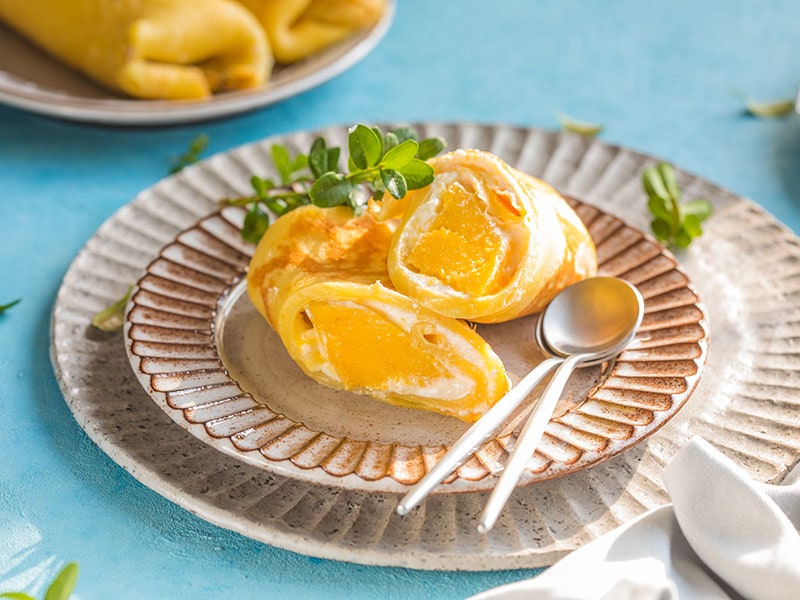
This delicate sweet treat, Mang Guo Ban Ji, is a beloved, authentic Hong Kong food that appears in various bakeries in the area. Furthermore, the way to make these wrapped pancakes is pretty straightforward.
The cooks will wrap the whipped cream inside a thin layer of crepe, put in some fresh mango chunks, and form the whole thing into a neat pillow shape.
When taking a bite, the rich, creamy taste from the dairy product will rush into your tongue, and the refreshing sweet-tart flavor from mango will come after that. All of them combine beautifully and create a lovely harmony in your mouth.
Here I will reveal the secret to the delectableness of Hong Kong-style Mango Pancakes.
Most suggested places to eat:
Address: Langham Place Shopping Mall, Langham Place, 8 Argyle St, Mong Kok
Time: 11 AM to 6 PM (From Monday to Sunday)
Website: www.honeymoon-dessert.com
Phone: +85221916618
Average Cost For One Portion: 32 HKD to 39 HKD (4 USD – 5 USD)
25. Jiang Zhuang Nai / Jiang Zhi Zhuang Nai (Ginger Milk Curd / Ginger Milk Pudding)
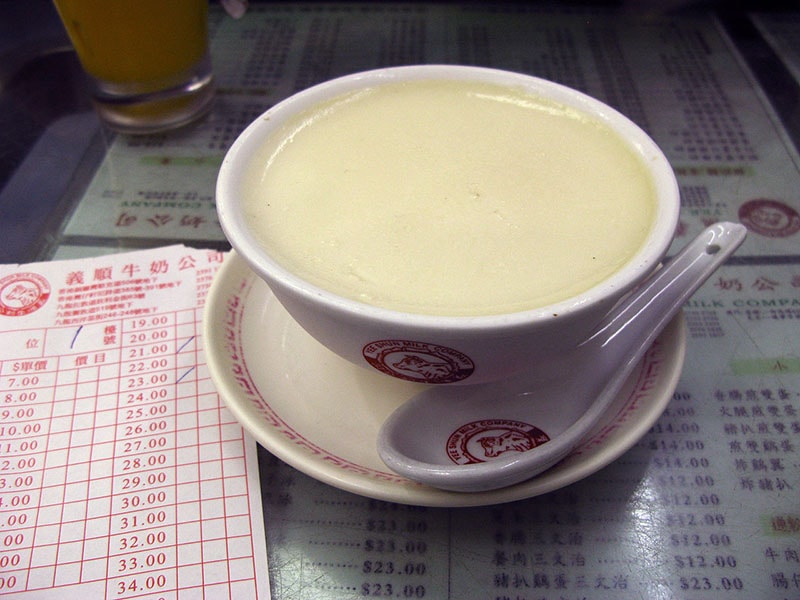
Jian Zhuang Nai is a Guangzhou, Guangdong-originated hot dessert or light sweet treat now served as Hong Kongers’ favorite breakfast. It might look simple, yet the traditional use of buffalo milk in this treat will warm up your soul.
A basic Hong Kong Ginger Milk Curd requires only ginger juice (from aged ginger), sugar, and milk. The ginger juice’s sharp flavor combined with the milk’s richness and creaminess makes you feel full and satisfied right away.
Since it has a warm temperature and warm effect when going into your stomach, you might love having a bowl of Jiang Zhuang Nai on a cold winter morning.
The way ginger does its magic work in thick milk will surprise you.
Most suggested places to eat:
Address: 506 Lockhart Rd, Causeway Bay
Time: 12 PM to 11 PM (From Monday to Sunday)
Website: info.hanatour.com/
Phone: +85225911837
Average Cost For One Portion: 36 HKD (about 4,5 USD)
26. Jidan Zi / Gai Daan Jai (Hong Kong Egg Waffles)
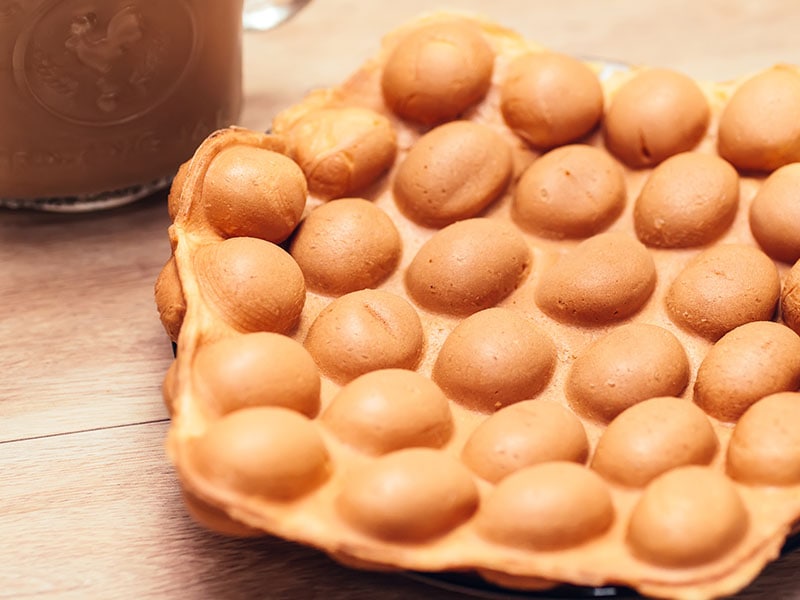
Just as its cousin, Western Waffle, the traditional Hong Kong recipe, Jidan Zi, is regularly served for breakfast. But it doesn’t mean that you cannot find it in the other period of the day, so feel free to find it at night markets.
Although Gai Daan Jai looks like the Western Waffle, it is an authentic Hong Kong recipe. There are various different stories behind the existence of this food, yet, it doesn’t matter to the visitors like me and you. One thing for sure is this dish means “little chicken eggs”.
The food has many flavor options for you to choose from, such as green tea, chocolate, purple yam/ sweet potato, cheese, or with ice cream stuffed.
Gai Daan Jai is now a famous street food in Hong Kong and Macau, it is also a memorable treat that can remind many people about their childhood.
This is how your Gai Daan Jai is made in Hong Kong street vendors.
Most suggested places to eat:
Address: 492 King’s Rd, North Point
Time: 7 AM to 6 PM (From Monday to Sunday)
Website: eggball.hk
Facebook fanpage: www.facebook.com/
Average Cost For One Portion: 21 HKD to 25 HKD (about 2,5 USD to 3 USD)
27. Dan Tat / Dan Ta (Egg Tarts)
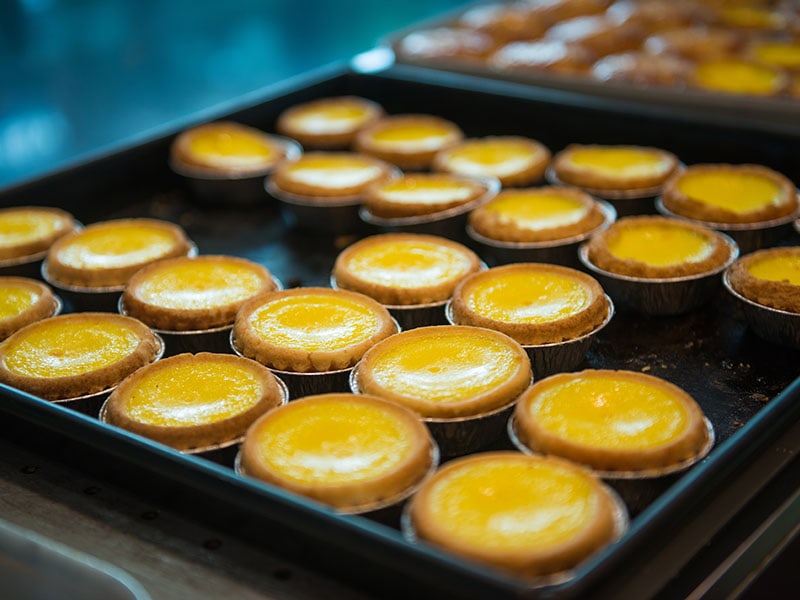
Hong Kong Egg Tarts are derived from the British Custard Tart and the Spanish Pastel De Nata. The food was first introduced to Guangdong in the early 20th century and in the 1940s in Hong Kong.
One fact is that the Hongkong-style Egg Tart is much smaller than the Guangdong variety and less sweet than the Macau delicacy of this custard Tart. Unlike Hong Kong’s, the Macanese Egg Tart also has a golden top.
At first, Dan Tat was only sold at the English café, not until the 1960s when Hongkongers started selling their variants at their coffee shops (cha chaan tengs).
Later on, several other filling variants are developed in these areas, including green tea, chocolate, or abalone. Therefore, you won’t feel bored after eating a lot of Dan Tat at once.
Most suggested places to eat:
Tai Cheong Bakery (Food Chain)
Address: 35 Lyndhurst Terrace, Central
Time: 9:30 AM to 6 PM (From Monday to Sunday)
Website: www.taoheung.com.hk/
Phone: +85283008301
Average Cost For One Portion: 2,8 USD to 3,9 USD
28. Bolo Bao (Pineapple Buns)
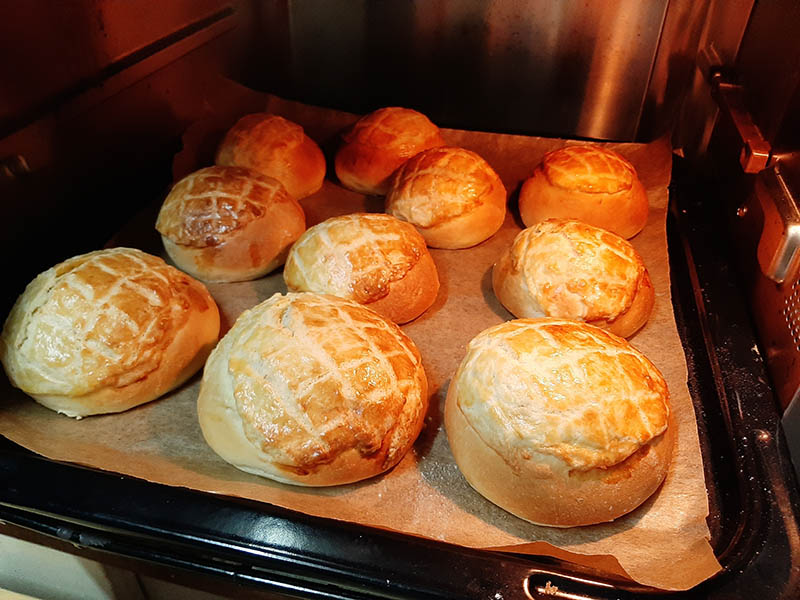
A surprising fact about Bolo Bao is it doesn’t include pineapple, so its name is relatively misleading. It is called pineapple buns because of its pineapple-like appearance, yellow color, and crackly top.
It is loved in Hong Kong that they have added it to their intangible heritage list since 2014. Invented in Hong Kong in the 1940s, these flavorsome sweet treats have gained popularity thanks to their undeniable deliciousness.
While the original version consists of only flour, eggs, butter, and sugar, today’s innovative variations consist of some sweet fillings (such as red bean paste and pineapple).
Since the sweetbread buns can be too sweet for you, find your favorite tea and serve them together. Believe me; this combination will never turn wrong.
The authentic Hong Kong Pineapple Buns’ flavor is shown here.
Most suggested places to eat:
Address: 41 Spring Garden Ln, Wan Chai
Time: 7 AM to 6 PM (From Monday to Sunday)
Phone: +85225720526
Facebook fanpage: m.facebook.com/
Average Cost For One Portion: 7 HKD to 34 HKD (1 USD to 4,5 USD)
29. Lo Mai Chi / Nuo Mi Zi (Glutinous Rice Balls/Hong Kong Mochi Balls)
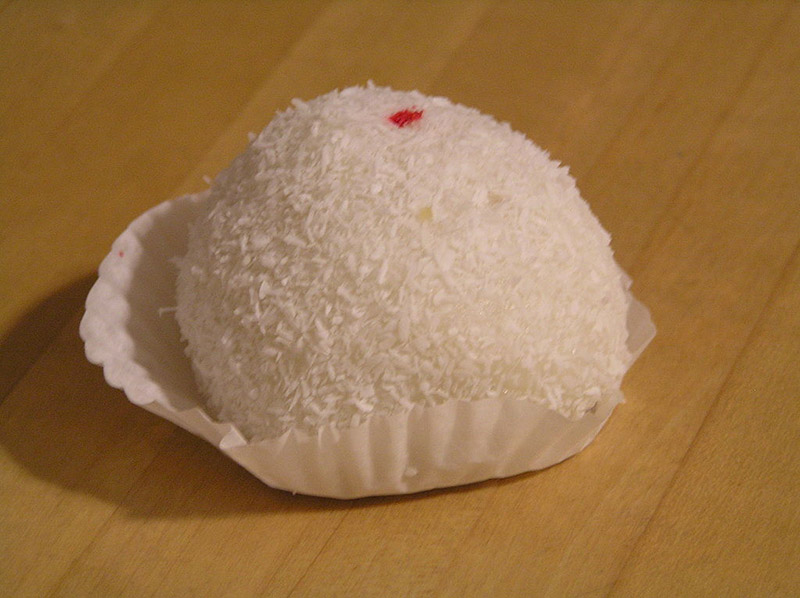
The Lo Mai Chi (or Nuo Mi Zi) might remind you of the Japanese Mochi, so the most distinguished difference between them is that Lo Mai Chi is much softer and stickier. A standard Lo Mai Chi includes various kinds of fillings such as red bean paste, mango, durian, etc.
These Glutinous Rice Balls are a famous festive sweet for Lunar New Year, the Lantern Festival or other traditional Chinese occasions. The white, soft, and chewy exterior covers the sweet and palatable fillings inside might leave you with a memorable taste experience.
Don’t worry; you can still find people selling Lo Mai Chi on regular days. Therefore, if you want to bring home some souvenirs from Hong Kong, these Lo Mai Chi balls are one of the most recommended options.
Most suggested places to eat:
Address: Temple St, Jordan, Hong Kong
Time: 2 PM to 11 PM (From Monday to Sunday)
Website: www.temple-street-night-market.hk
30. Hong Kong-Style Zhen Zhu Nai Cha (Bubble Milk Tea)

Don’t misunderstand this Zhen Zhu Nai Cha with the traditional Hong Kong-style Milk Tea (Gang Shi Nai Cha, which is derived from the British Milk Tea).
While Gang Shi Nai Cha only includes tea and condensed/evaporated milk, the Zhen Zhu Nai Cha consists of various other components. Some of them are the luscious, chewy tapioca bubbles (Zhen Zhu) and the special mix in the milk and the tea part.
The Hong Kong-style Zhen Zhu Nai Cha has roots in a popular Taiwanese treat and results from the original version’s influence and spread. Once coming to Hong Kong, it would be best to try these yummy drinks once and give me a review later.
Do you wonder how people in Hong Kong think about Bubble Milk Tea?
Most suggested places to eat:
Address: Tsim Sha Tsui, Nathan Rd, 27-33號, Alpha House, 地下F舖
Time: 12 PM to 6 PM (From Monday to Sunday)
Website: www.the-alley.hk
Phone: +85221579267
Facebook fanpage: www.facebook.com/
Instagram: www.instagram.com/
Average Cost For One Portion: 22 HKD to 36 HKD (3 USD to 4,5 USD)
31. Sai Do Si (Hong Kong-Style French Toast)
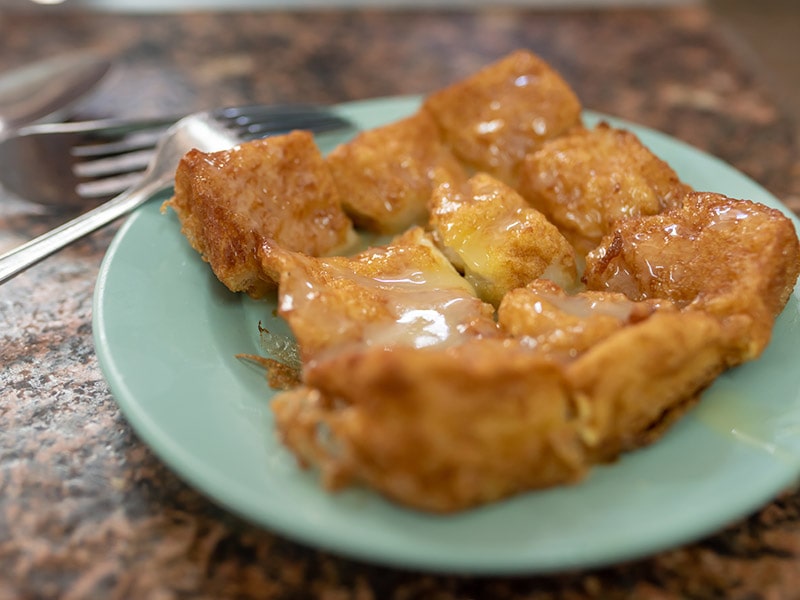
Even though Sai Do Si (or Hong Kong-style French Toast) is inspired by the original toast recipe from France (during the French colony period), there are several differences.
For instance, authentic French toasts are regularly pan-fried, while Sai Do Si is typically deep-fried. In Hong Kong, Sai Do Si is usually served in Cha Chaan Tengs (traditional teahouses), and there are many flavor options for you to opt for.
From the more prevalent options of sweet fillings (including peanut butter and fruit jam fillings or honey/golden syrup) to the less-known savory fillings of meat floss, kaya jam, or else, all of them are great.
To enjoy this treat fullest, you should order a cup of coffee or tea and serve them together.
Most suggested places to eat:
Address: Shop H1, G/F, Tung Lee Mansion, 1C-1K Water St, Sai Ying Pun
Time: 10 AM to 8 PM (From Tuesday to Friday); 9AM to 8PM (Saturday and Sunday), off on Monday
Phone: +85225592389
Average Cost For One Portion: 49 HKD to 62 HKD (6 USD – 8 USD)
Have A Good Trip!
Hong Kong is a famous place to visit and hang out in Asia and worldwide. One reason for that is the distinctiveness of Hong Kong cuisine. The food here is diverse and infinitely rich, enough for you to go from one surprise to another.
The street foods I’ve introduced to you above are just a few of them, so take your time to dig deeper if you’re interested.
Feel free to leave your review about the above dishes or a question to ask me about this article’s information. I hope you will have a wonderful trip to Hong Kong!
